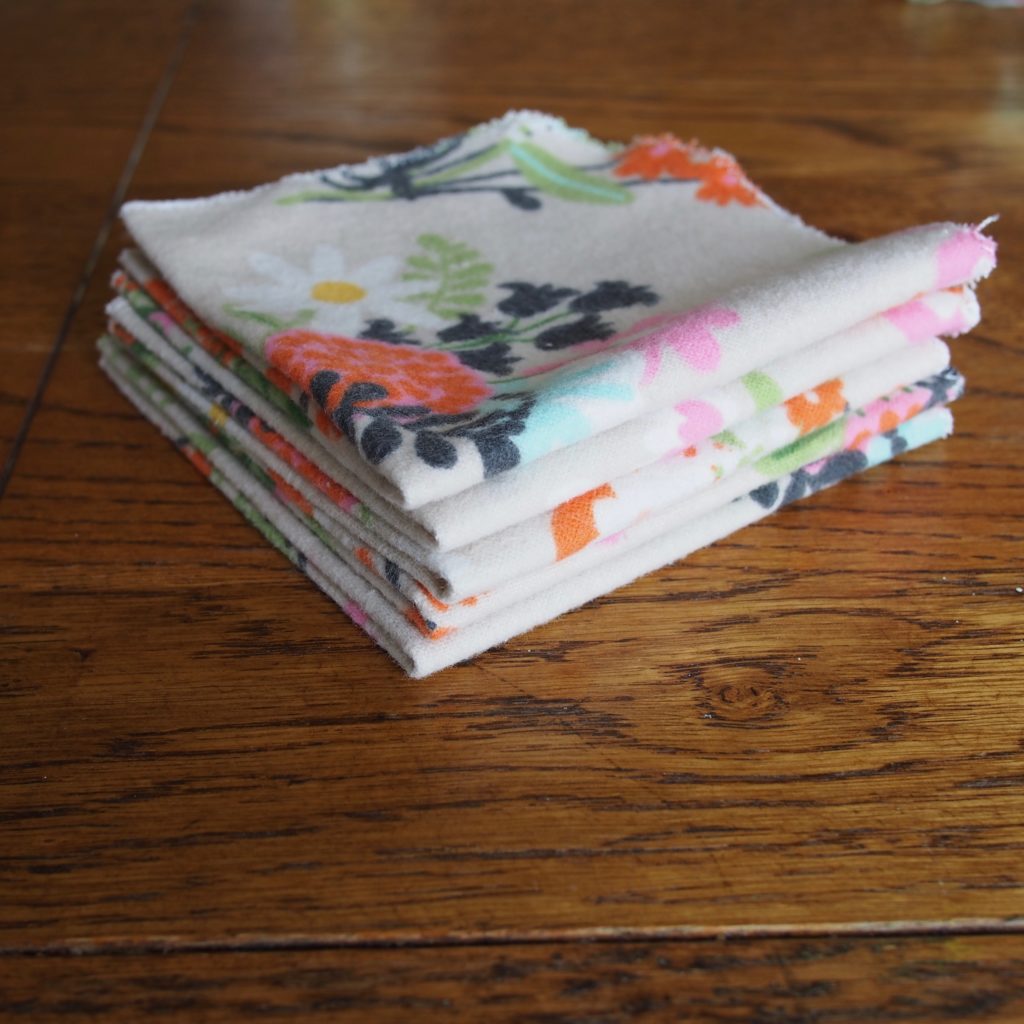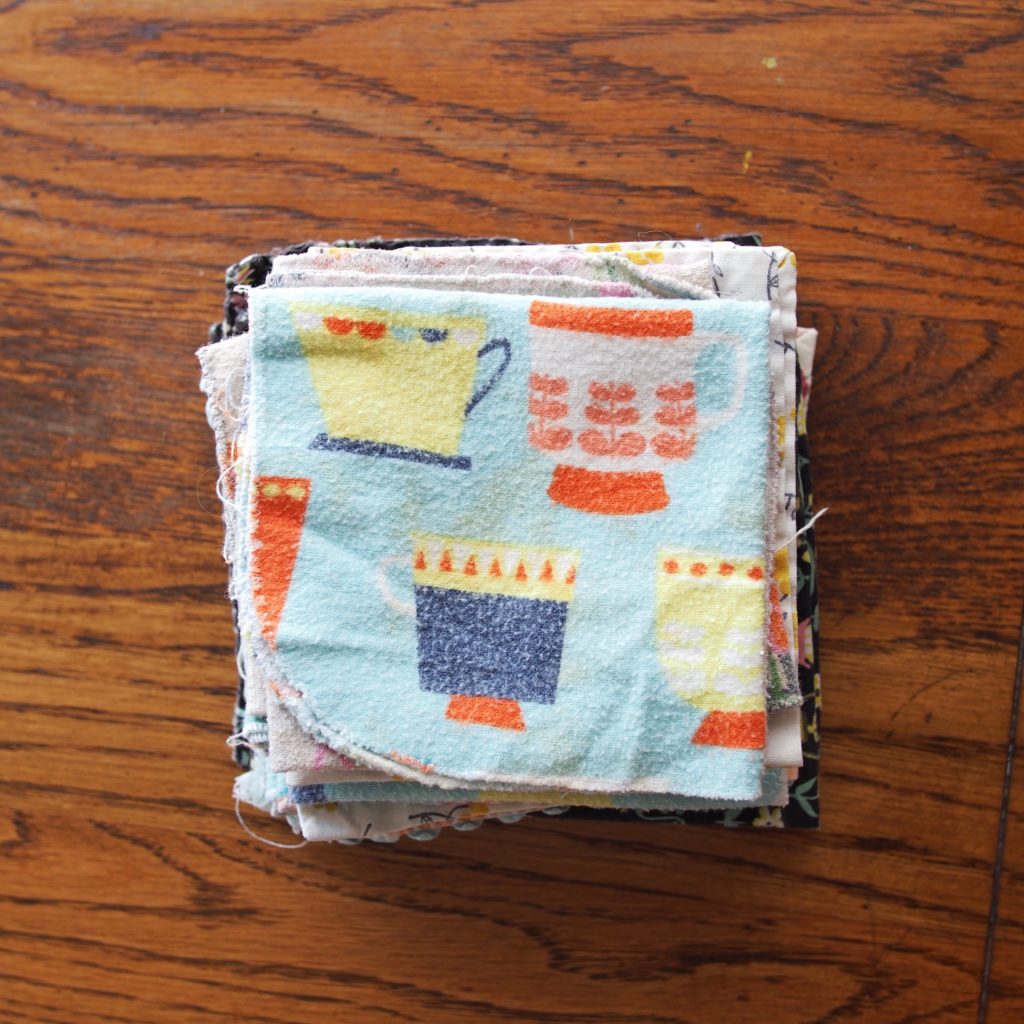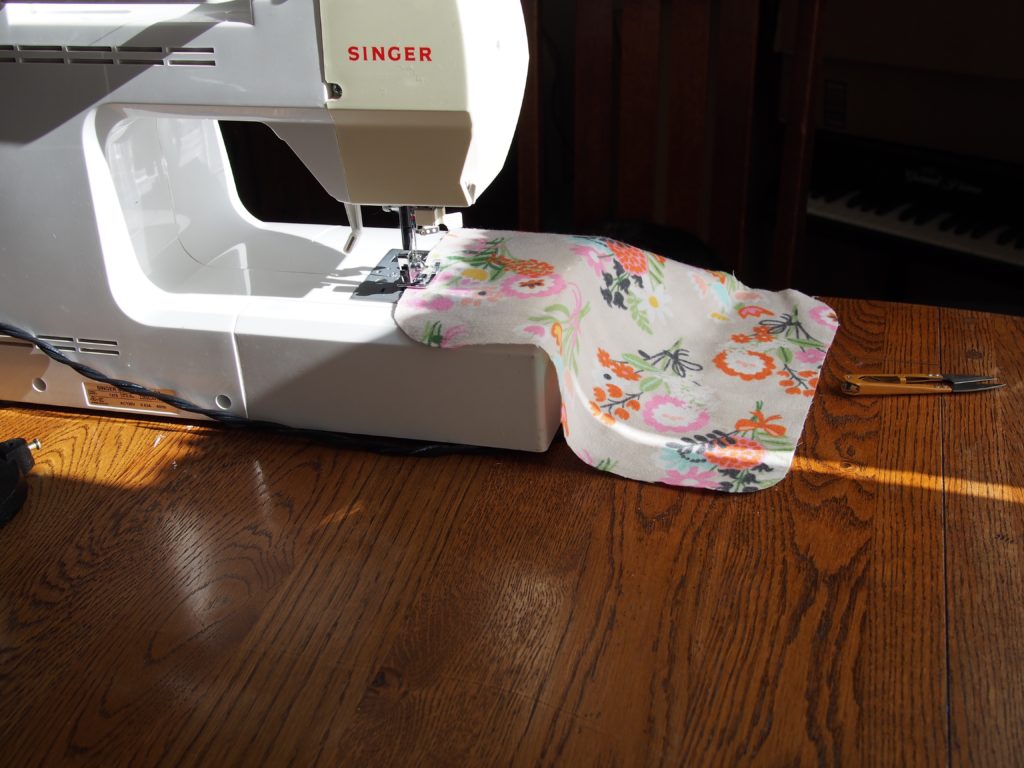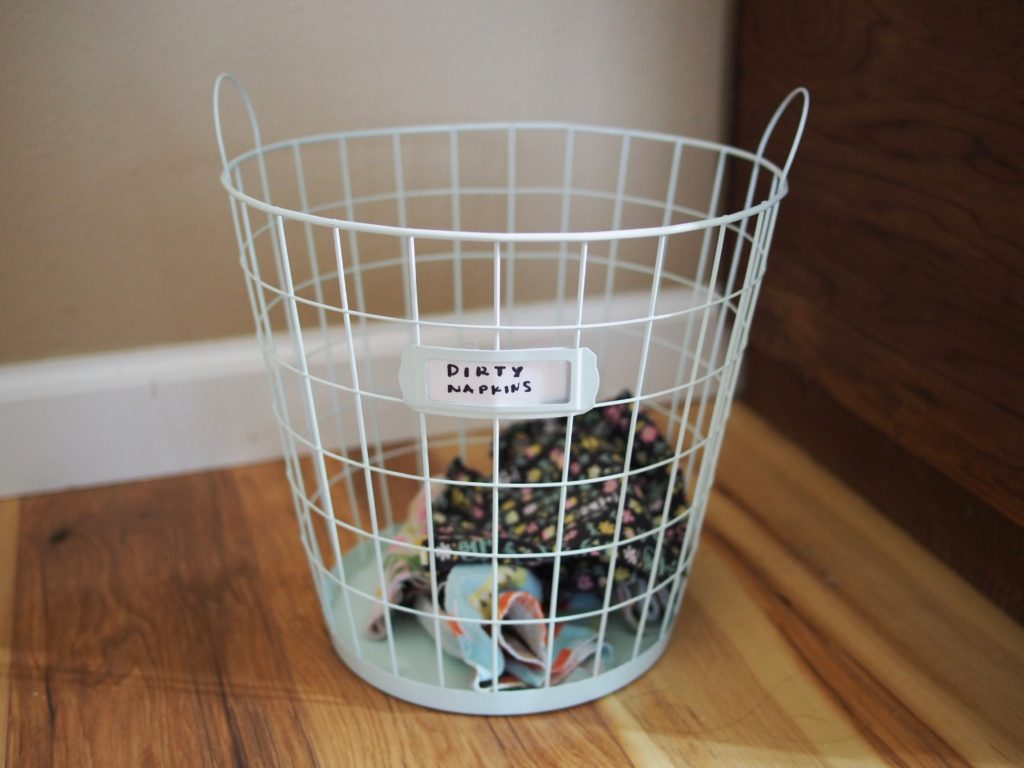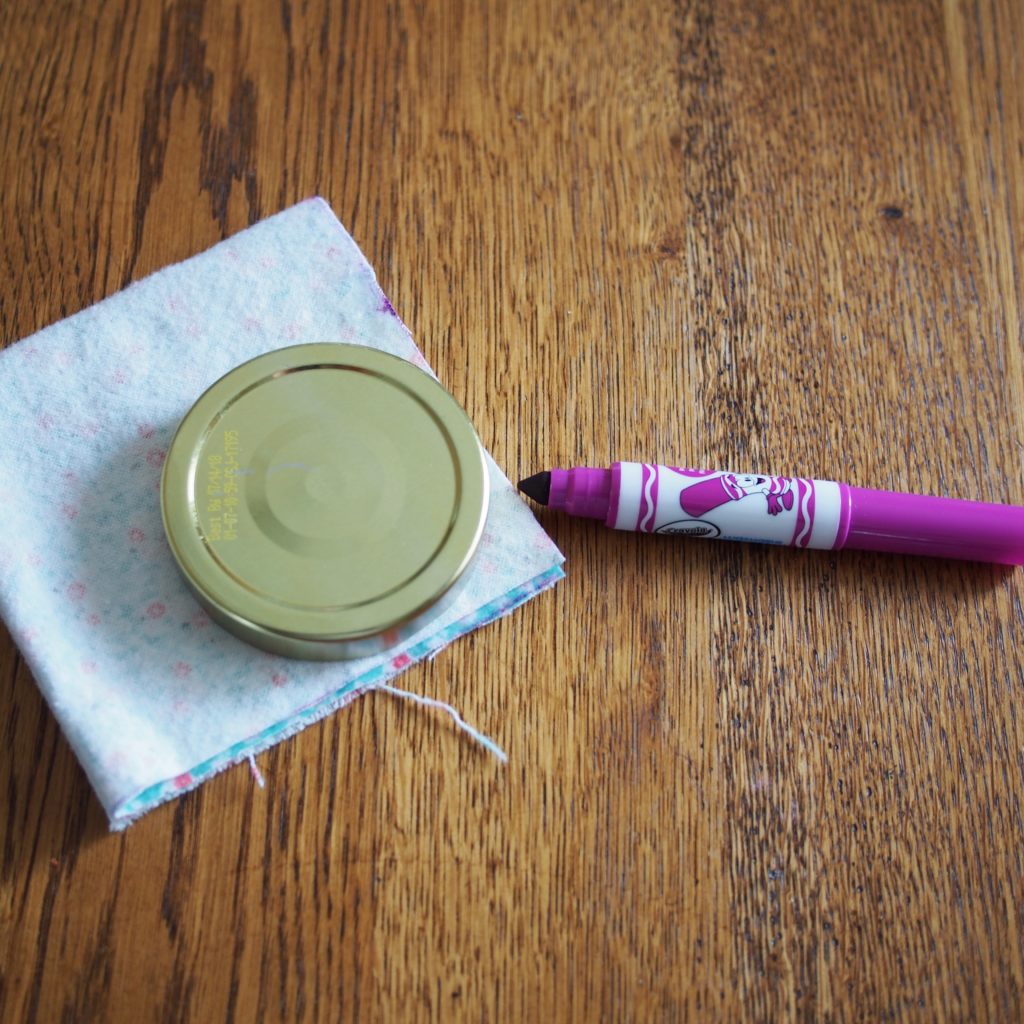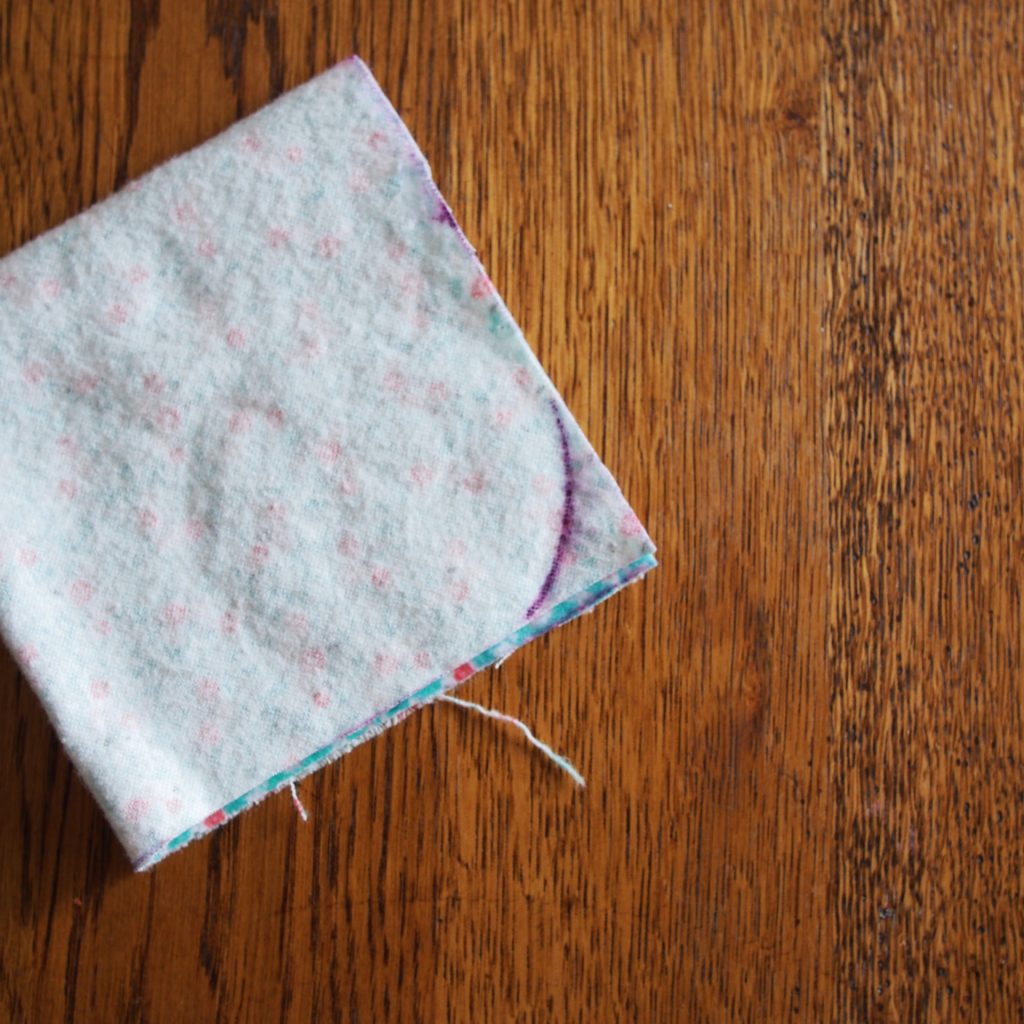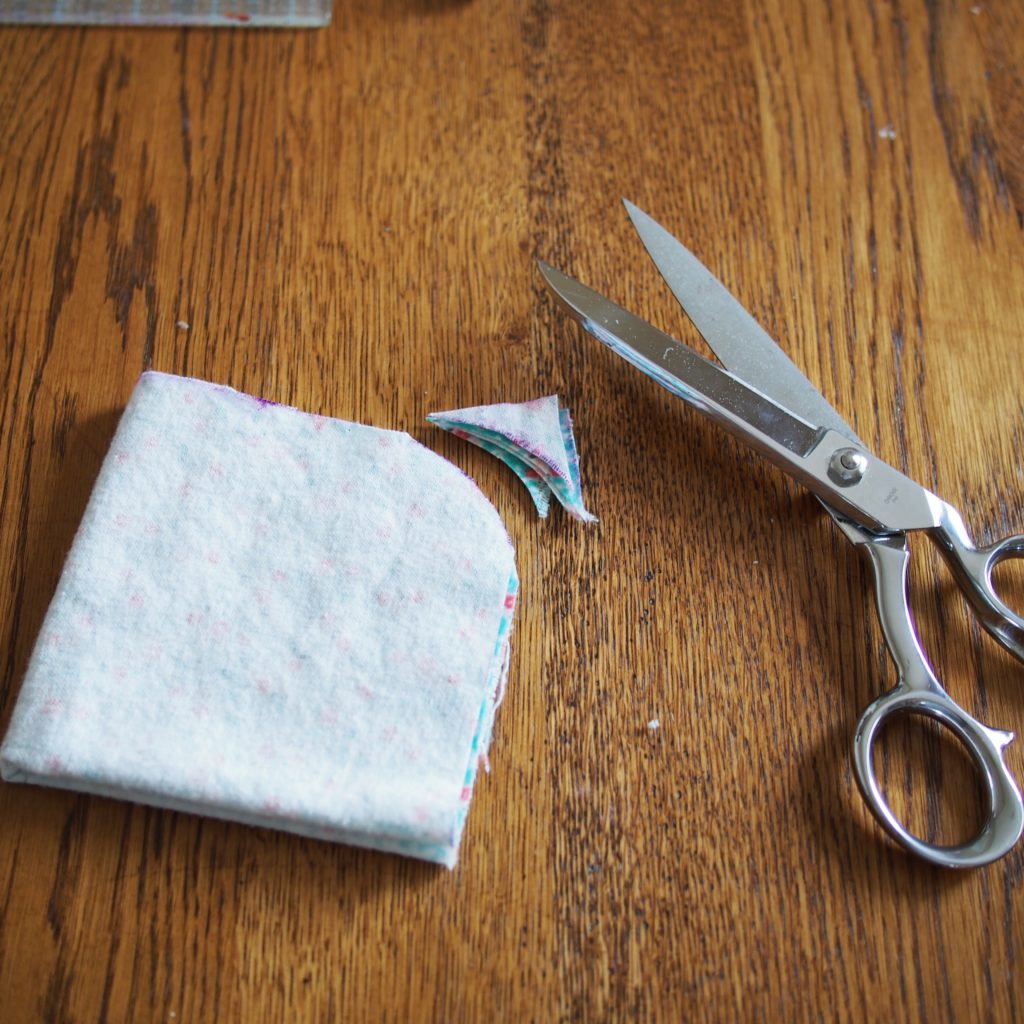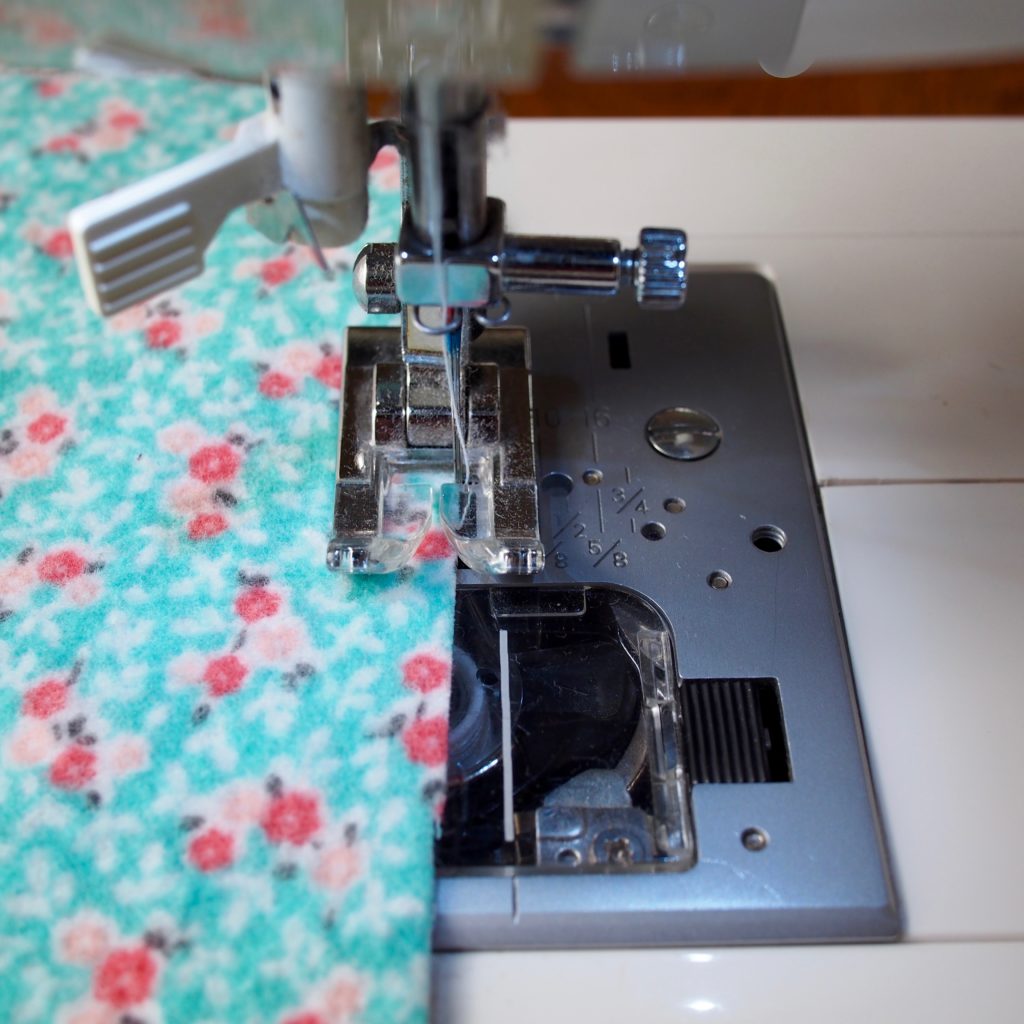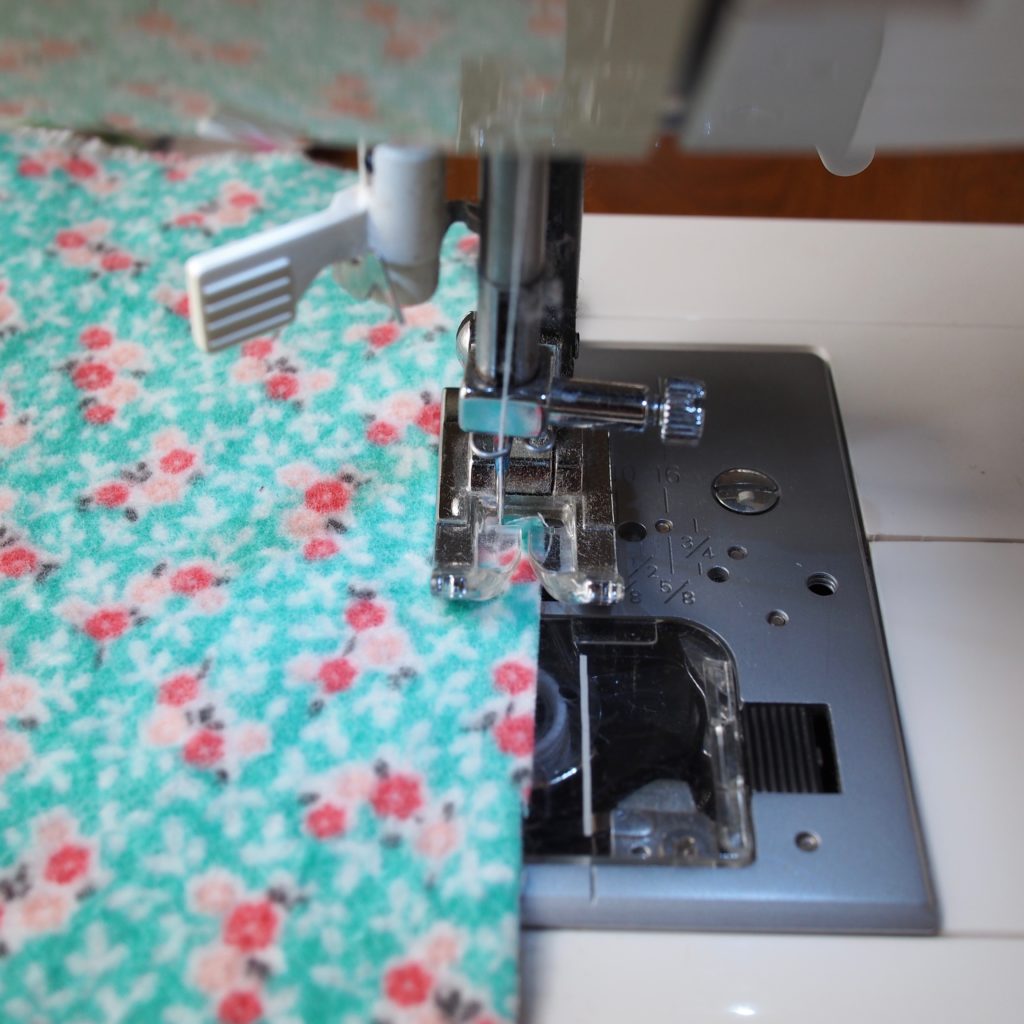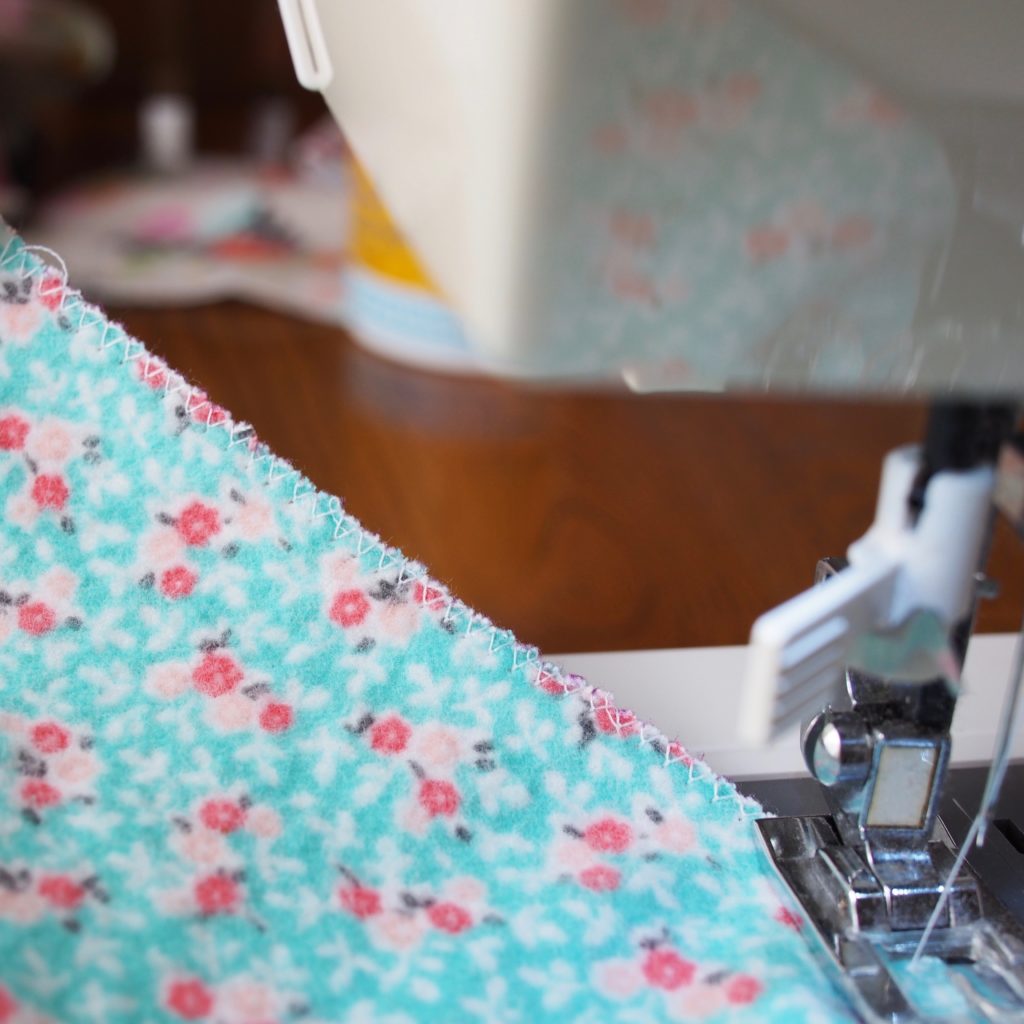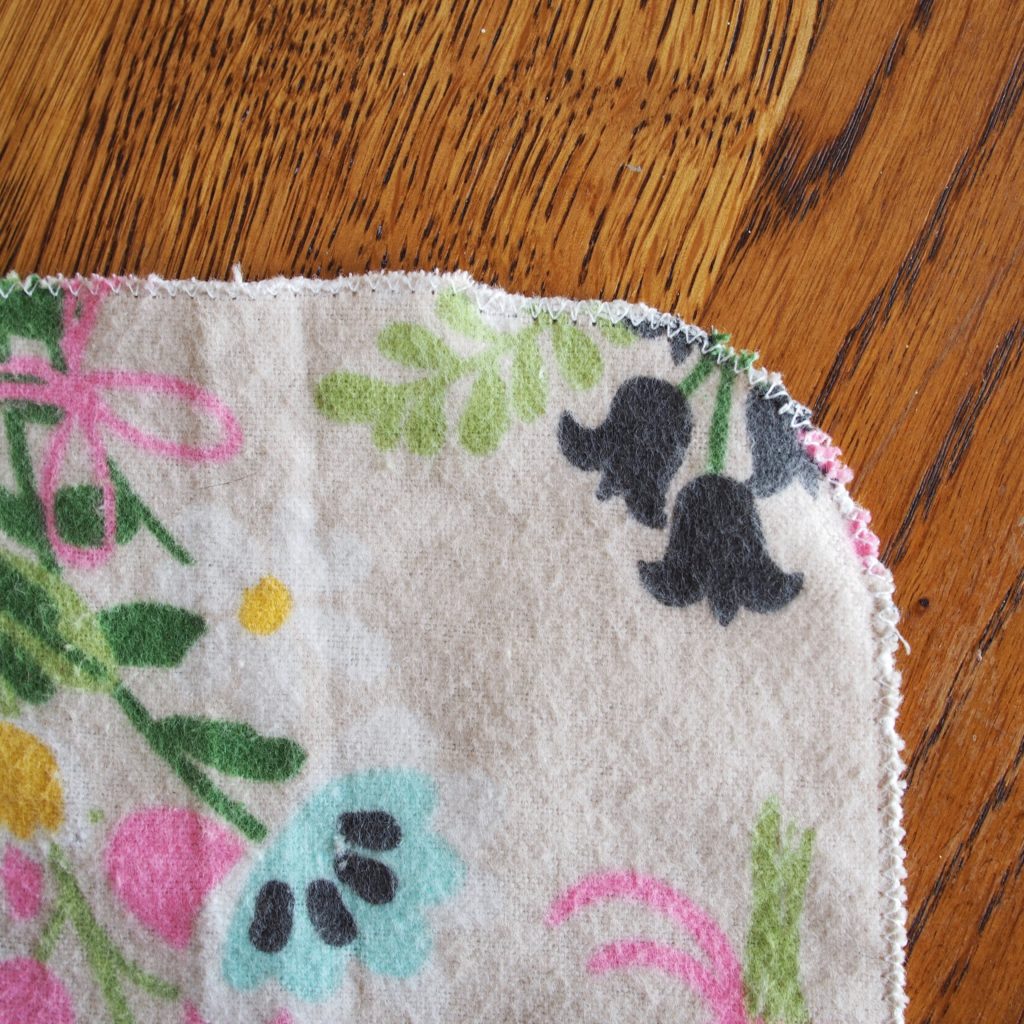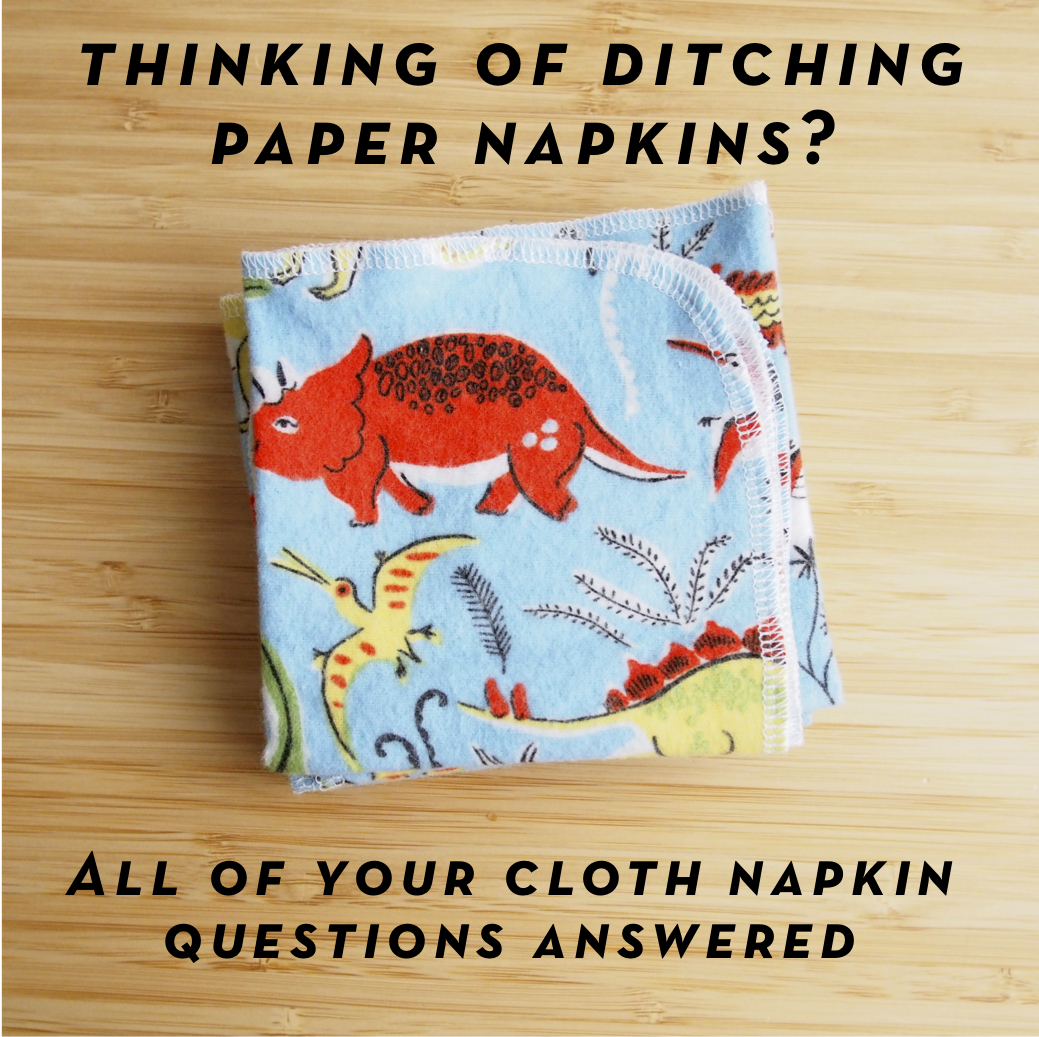
I haven’t bought paper napkins in so many years that I can’t even remember a time when that was a regular grocery store purchase. Sometimes I forget that other people use them and it kind of surprises me when I find out. I’ve gotten some interesting questions and comments about cloth napkins, so I thought I’d put together a few responses here for anyone who’s thinking of making the switch to cloth.

Now to be clear, I 100% believe that paper napkins have a job in the modern world. If laundry is a major life hurdle for you because of an injury, if you have to take the bus to the laundromat, if you’re disabled, or if you’re working three jobs then cloth napkins might not be a priority. I get that.
For those of us who are able bodied and have a washing machine indoors however, there’s really not an easier green switch to make. You already wash towels, so really all you have to do now is add some napkins in with whatever load of laundry you’re doing and bam. No more napkins from the supermarket. You just went green. Here are some of the most common questions and comments I get about cloth napkins …
We’re not fancy enough for cloth napkins. I guess at some point between 1965 and 1994 or thereabouts people decided to use scratchy-as-heck holiday themed polyester napkins at Thanksgiving, Christmas, and Easter and that shit gave cloth napkins a super duper bad name. I need everyone to say this with me: CLOTH NAPKINS ARE NOT FANCY. They are FUNCTIONAL. Don’t buy those horrible 20 inch square polyester holiday napkins- those are tacky and useless. Use soft cotton gauze or flannel and you’ll get it. My old cloth napkins are so soft that I feel phantom lip itches just thinking about using paper napkins. Blegh!
My kids would ruin them …They’re meant to be used and worn out. Even when they get “ruined” they will have lasted ages longer than paper napkins and will have paid for themselves dozens of times over. Chances are that when you think they’re ruined, they’re actually just ready to move on to a different job. Like counter wipes. Or car dash wipes. Or any other thing you use rags for.

I can’t afford the number of napkins my family would need … If a family of 4 used only one single napkin per meal per day, you are using 4,380 napkins per year. My local supermarket sells 300 napkins for $8.29. At that price I’d be spending around $121 per year on napkins. On something I throw in the garbage after just one use. By comparison cloth napkins are purchased once and last YEARS. That means that if I had been using disposables for the last 9 years I would have spent over $1000 on disposable napkins. And that’s just napkins. If I’d purchased my napkins from an Etsy seller I would have spent only around $50 for the quantity we use. So if you’re buying paper napkins you can absolutely afford cloth. You’re already spending that money anyway!
How do you keep up with the laundry? Our napkins make up barely any laundry at all, and they certainly do not get their own special load. I have a cute little wire basket that we keep next to the dining table and when we finish dinner we pop our napkins in. When we run low on napkins or when the basket gets full I just add the whole thing to whatever load of laundry is going up next. I also have a paperless kitchen, so sometimes I wash all of the kitchen towels and napkins together. At most we wash about 15 napkins at a time, like a wadded up child sweater’s worth. It’s honestly hardly anything at all compared to the rest of the laundry produced by 2 adults, 2 kids, and 19 pets.
Is it gross?…. No. Pretty much never. I don’t ever end up with pizza gunk on my t-shirts or anything else gross. Anytime we have extra extra yucky napkins I just wash those with kitchen towels on the “Sanitize” setting on the washing machine. If they’re crusty I rinse the crust out first. But that is SUPER rare. I don’t have time for pre-treating or any other fancy laundering. I just don’t.
Is it hygienic?… Think about the parts of your body that get rubbed on a towel after you shower. I’m not sure about you, but in my house we dry ALL of our body parts. I wash my towels and reuse them. Feels pretty hygienic to me. Well napkins get way less intimate with our body parts, so I’m not sure why washing and reusing napkins would be any less hygienic than washing towels.
My family would use waaay too many napkins to switch to cloth … . I do have a bunch of napkins in circulation, but not as many as you’d think. We are 2 adults and 2 filthy kids and we have somewhere around 15 to 20 napkins that I’ve made over the years. They get washed when we run low and then BLAM! Like magic we have more napkins. Without having to go to the store. So even though your super messy family full of 12 teenage boys may use a lot of napkins, you probably don’t need three hundred to get started. I’m guessing something more like 2 dozen for a super actively messy family would be a doable amount. And if you need more you can always buy more.
I wouldn’t even know where to begin … The only way to get started is to start. Baby steps. If you’re not ready for 2 dozen napkins start with just 4, or 6. Try out using a set for dinner or with packed lunches and see how it goes. Even if you only replace your lunch napkins with cloth you’ve made a positive change to your routine. Once you find something that works, just keep going!
Did I answer your suspicious napkin questions?! If you still want to know more, drop me a line! Did I convince you to make the switch? Check out my cloth napkins in person at the Forest Grove or Hillsboro Farmers Markets or send me a line for a custom order.





